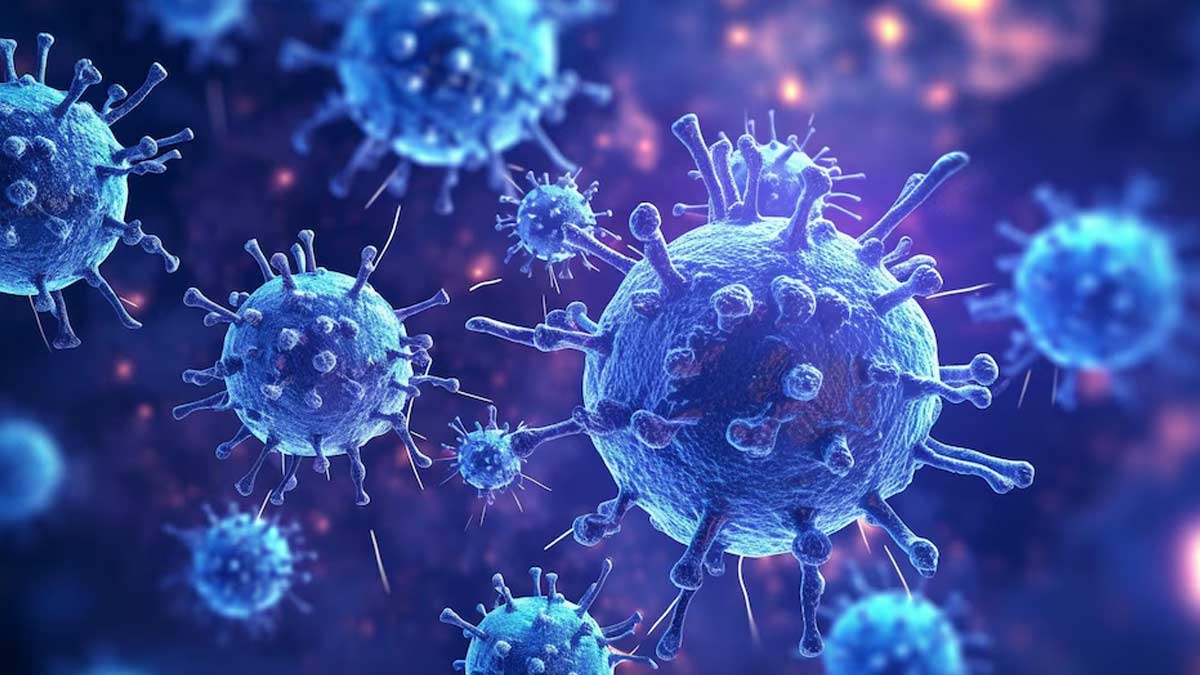
A new COVID-19 variant, LB.1, has emerged in the United States and is spreading rapidly. Experts predict it could soon become the dominant variant, surpassing KP.3. According to the Centers for Disease Control and Prevention (CDC), LB.1 currently accounts for 17.5% of new COVID cases.
Table of Content:-
Cases of LB.1 are concentrated in California and the HHS Region 2 encompassing New York and New Jersey. "At this time, there's no indication that KP.3 or LB.1 cause more severe illness," said CDC spokesperson David Daigle, "The CDC is actively monitoring SARS-CoV-2 variants and their potential impact on public health."

LB.1 COVID Variant Explained
Reports suggest LB.1 is closely related to KP.3, which itself descended from the JN.1 variant. The Infectious Diseases Society of America (IDSA) explains that ‘unlike KP.2 and KP.3, LB.1 possesses an additional mutation (S:S31del), that seems to enhance its transmissibility, on top of the substitutions defining them as 'FLiRT' variants. Variants with this deletion, like LB.1, are sometimes referred to as 'deFLiRT'.’
Research from Japan, released as a preprint, suggests that this mutation makes LB.1 more infectious and better at evading the immune system.
Why Is LB.1 Spreading Rapidly?
The variations in symptoms and severity from new variants are influenced by multiple factors, including individuals' immunity from previous infections and vaccinations, as well as viral mutations.
Historically, the CDC has tracked the effects of new strains using data and studies from hospitals, particularly observing trends in regions where new variants appear first. However, since a pandemic-era reporting requirement ended earlier this year, fewer facilities report hospitalisation and ICU admission data to the CDC. A proposal to make such reporting a regular requirement by the Centers for Medicare and Medicaid Services is not set to begin until October.
Also Read: Reports Claim New COVID Variant ‘FLiRT’ Can Escape Immune Defense: Can Vaccines Stop This Variant?

To compensate, the CDC has turned to alternative sources, such as a network of hospitals that still provide detailed patient data and emergency room visit records.
In California, where the virus levels in wastewater rose to "high" earlier this summer, CDC’s COVID-NET data indicates that hospitalizations reached levels not seen since February. Recent emergency room data from California also shows a rise in COVID-19 patients to levels last observed in February. Despite this, the KP.3 variant, rather than LB.1, constituted the majority of cases during this early surge, according to estimates from both the CDC and California's health department. By June 8, LB.1 was projected to account for just 7.8% of cases in HHS Region 9, which includes California and other western states.
Conversely, LB.1 appears to be more prevalent in HHS Region 2, encompassing New York and New Jersey, where it was estimated to cause 30.9% of cases by June 8.
Also Read: New COVID Variant FLiRT Circulating In US, Here's What Experts Are Saying
So far, the CDC has found no evidence of increased severity compared to prior strains like KP.3. The CDC continues to monitor SARS-CoV-2 variants to better understand their potential impact on public health, according to a statement by CDC spokesperson David Daigle.
Also watch this video
How we keep this article up to date:
We work with experts and keep a close eye on the latest in health and wellness. Whenever there is a new research or helpful information, we update our articles with accurate and useful advice.
Current Version